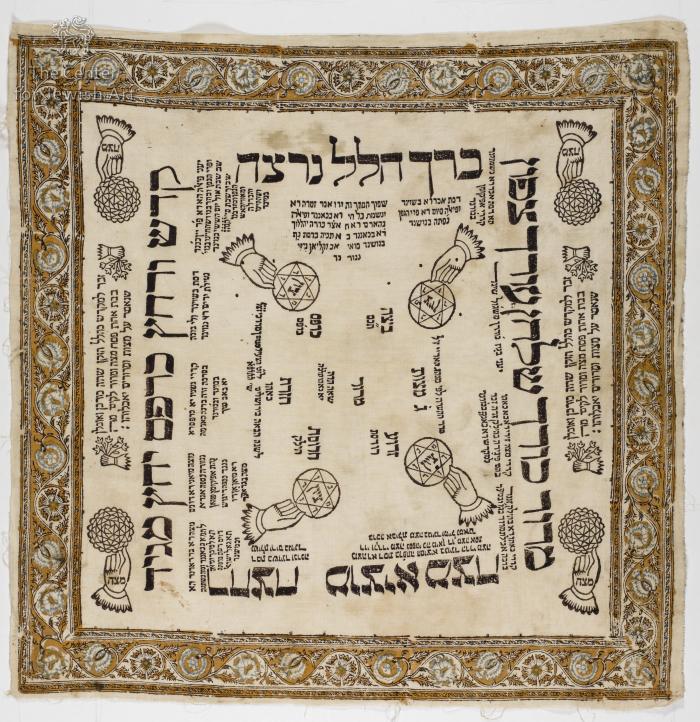Obj. ID: 38530 Passover cloth, Iran, 1921

sub-set tree:
H | Haggadah, Passover (Listed according to the text of the Haggadah; See also separate biblical subjects in this list) | The Main part of the Haggadah (arranged with the Ritual Acts (Seder Signs) interspersed with the main components of the text of the Haggadah): | Maggid (the narration) | Maggid-1: Ha Lahma Anya (This is the bread of affliction) | Holding matzah (Maggid )
H | Human Figure | Hand | Hand holding flower
P | Passover (Pesah; See also: Haggadah, Passover) | Matzah
|
The following description was prepared by William Gross:
In the Ashkenazi tradition, the different types of symbolic food for the celebratory Passover eve meal are placed on a dish in the center of the Festive table. These plates often contain depictions of symbolic foods and sometimes texts identifying them. The plate is uncovered. In most Sephardic and Mizrachi communities, the symbolic foods are placed on a regular plate that is covered by a large textile covering.
This is one such covering for a Passover Seder plate. This textile is a handmade, block-printed cloth for Passover that carries extensive inscriptions, mostly quotations from the text of the Haggadah. The border is the typical kind of Persian block-printed motif. The hand with the Matzah is an image taken from Italian printed books where it was used at least from the early 17th century. But the artist here has introduced a change, putting the Magen David with the word "Zion" inside in place of the Matzah on some of the illustrated hands. The inscription includes the specific date of 1921 for the creation of this textile. The style of printing with blocks was called "Ralamkar". There are a few examples of this on a similar cloth in a few public and private collections, including the Riverdale Museum in New York.
Inscription: Kadesh ve-Rachatz Karpas.......


